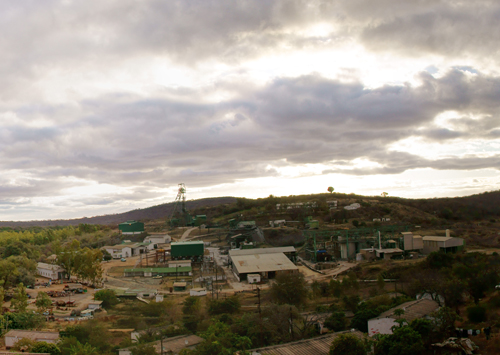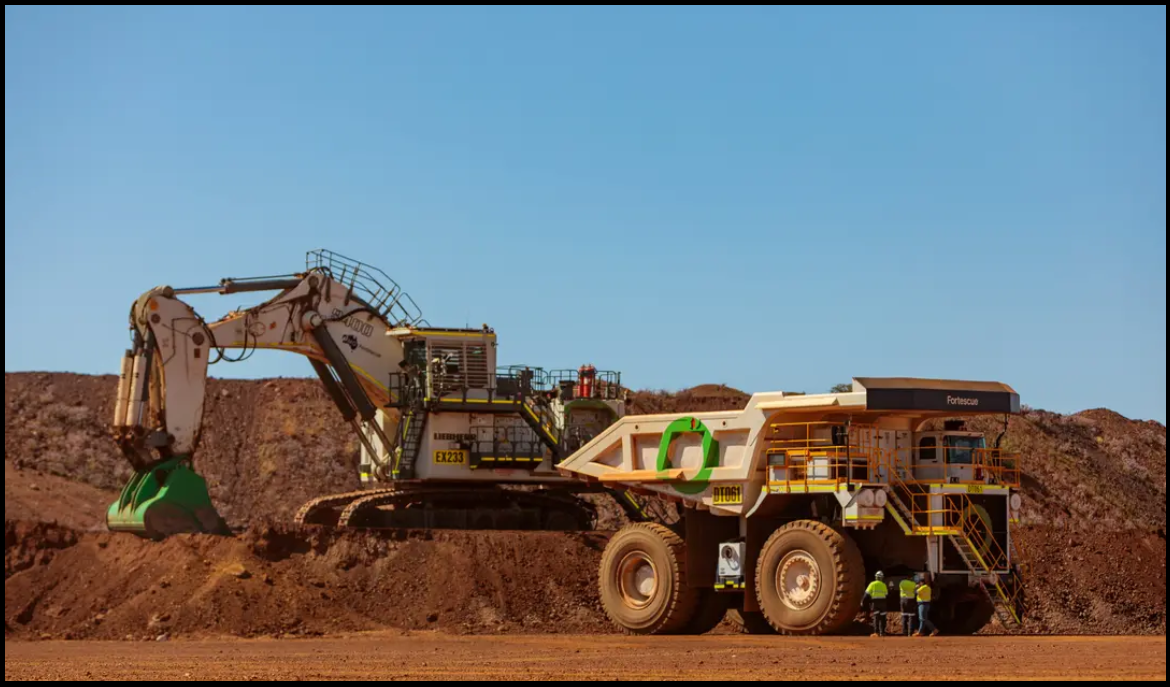
Without beating around the bush, the gold industry as it stands in mid-2013 is under pressure and not just when it comes to the recent falls in gold price. This pressure also stems from issues including resource nationalism, labour concerns, political and legislative uncertainty, and increased environmental requirements. With these factors having an increasing influence on the financial performance of gold mining operations in core markets like Africa it is all the more important to recognise the achievements of those businesses that are not only weathering the storm, but prospering in difficult conditions.
“While the drop in the gold price we have seen in recent times now appears to be recovering slightly, we have remained profitable at these considerably lowers levels, this at a time when much of the industry has been sub-economic,” states Stefan Hayden, Chief Executive of Caledonia Mining Corporation. “We have done so by controlling our costs and the efficient use of labour we have trained and been able to retain. This has allowed to maintain our position as one of the lowest, if not the lowest cost listed producer on the African continent and one of the lowest cost producers in the world.”
As an exploration, development and mining company focused on Southern Africa, Caledonia’s primary assets are a 49 percent interest in the Blanket mine in Zimbabwe, which produced over 45,000 ounces of gold in 2012, and a 100 percent interest in the Nama base metals exploration project in Zambia.
The Blanket gold mine re-started production in April 2009, following a temporary six month shut-down during the testing times before Zimbabwe changed its currency to the US dollar, and has been expanded since to significantly increase production capacity to 48,000 ounces of gold per annum last year. Last year Blanket was the first mining company to comply with the Zimbabwe Indigenisation Legislation. Meanwhile the recently reconstituted Blanket board have also approved a four year growth strategy for the mine. Estimated to cost a total of $37 million the investment programme will be funded from Blanket’s internally generated cash is expected to result in progressive increases in gold production to approximately 76,000 ounces in 2016.
As it stands at the time of writing the Blanket mine extends over three kilometres. Current work on the asset includes the sinking of the new No. 6 Winze shaft. This shaft will travel down to the mine’s current production level of 750 metres and continue down to approximately 1,080 metres below surface. While the No. 6 Winze will allow for more rapid access to the mine’s ore bodies below 750 metres, it is only an interim measure, one that will remain in place while the company assesses its plans to sink a central shaft that could eventually descend to 2,000 metres.
“One of the major advantages of our operations at Blanket is that we have 18 satellite properties all within trucking distance of our main plant,” Hayden continues. “Ever since we purchased the mine from Kinross Gold eight years ago we have been continuously investing capital to the point where our metallurgical plant now has a very substantial over capacity for what we are currently producing. Rather than this being a negative issue, we are now starting to take up that over capacity by bringing these satellite properties into production as planned.”
Work currently ongoing around the main Blanket mine includes shaft sinking and underground development on one property and the dewatering of an older mine that ceased production in the late 1950s. While all of this is ongoing Caledonia continues to stockpile ore from these operations, rather than truck it to the plant, the reason for which Hayden goes on to clarify. “At Blanket we run a huge, highly efficient metallurgical plant where we recover gold at better than 93 percent. With this in mind we are simply not prepared to jeopardise that recovery by simply throwing ore into it without having first carried out extensive test work to ensure that we can adapt a blend of that ore so that we don’t affect our overall recoveries.”
The 2012 financial year also saw Caledonia complete a comprehensive drilling programme at its Nama Base Metals Projects in Zambia. This involved drilling some 10,903 metres over 20 holes, the results of which confirmed the existence of the copper-bearing mineralised zone identified in 2011. The 2013 drilling programme on the asset will include shallow drilling on the identified zone to improve resource definition. Initial exploration work will also be carried out on additional zones of mineralisation that have been identified to the west and south of the mineralised zone.
Turning back to Zimbabwe, while Hayden does agree that the market there does pose several unique challenges, it also possesses considerable benefits which often do not get the coverage or recognition they deserve. “The biggest advantage of working in Zimbabwe is that we are dealing with a very well educated labour force who collectively boast a strong work ethic in everything they do. What we have found as a result is that we are able to utilise this labour efficiently, to the point where we employ around a third of the amount of labour that one of our neighbours employs in order to produce four times as much gold. It goes without saying therefore that we have found it to be an absolute pleasure dealing with labour in Zimbabwe.”
Leaving a positive legacy behind for Zimbabweans is also something that is at the forefront of Caledonia’s thinking when it comes to its operations in the country. This commitment runs right through the business right down to the fact that it is the only African signatory of the Cyanide Convention. By putting less than 30 parts per million of cyanide onto its tailing dams Caledonia is reaffirming that not only is it safeguarding the welfare of its employees, but also that of surrounding communities and the region in general.
In accordance with the Indigenisation and Economic Empowerment Act ten percent of the Blanket mine is actually owned by the local Gwanda community, with a further 16 percent held by the Sovereign Wealth Fund of Zimbabwe and ten percent by all of Blanket’s employees. Over and above its holding in the mine the Gwanda community has also been the recipient of $1 million donation from Blanket, which has also provided it with an advance dividend of a further $4 million to enable it to proceed with various community projects such as clinics, schools and the drilling of boreholes for water.
Other projects that highlight the corporate social responsibility aspect of Caledonia’s business include the building and rehabilitating of approximately 130 kilometres of hard top and dirt roads around the mine, and the ongoing support the company lends to local schools located within a 20 kilometre radius of its operations. Additionally, Caledonia has to date donated $2 million towards Zimbabwe’s Presidential Scholarship Fund. This fund enables Zimbabwean students based outside of the country to continue their studies at various international institutions.
“Skills generation is something we are equally dedicated to facilitating in Zimbabwe,” Hayden enthuses. “As well as the six engineers we graduate on average each year through the country’s School of Mines we also operate a training school at Blanket from which we run more than 1,000 courses per quarter for our employees.”
It isn’t just the company’s employees who Caledonia have incentivised to improve their quality of life. Their dependents have also been encouraged to become more self-sufficient by growing vegetables. In order to help facilitate this the company pumps water from one of its smaller, out-of-use shafts to irrigate crops.
“All the aforementioned work we are doing is being done because we want to improve the quality of life of our employees and neighbouring communities,” Hayden concludes. “Our employees can see this and a measure of their satisfaction when it comes to working for Blanket can be seen in the fact that our staff turnover figure is low at 0.01 percent per annum. This means that not only are we developing talent but we are retaining it, and that is crucial for any successful mining operation, particularly one that like ours is actively looking to expand, both in Zimbabwe and further afield.”
Written by Will Daynes, research by Robert Hodgson













